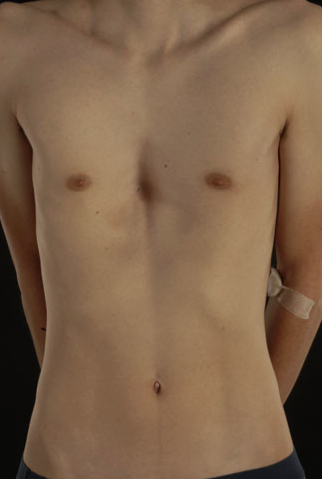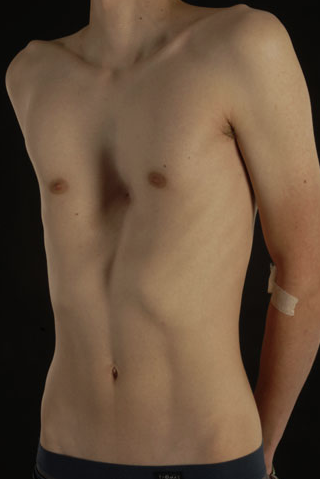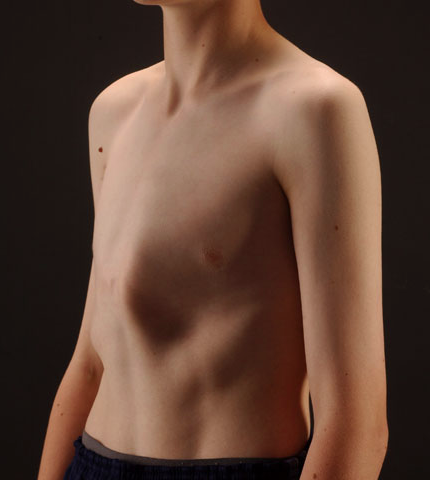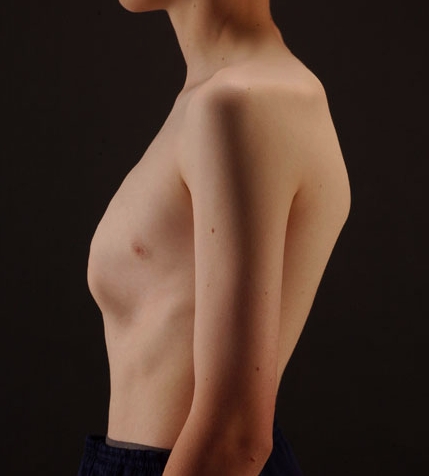A pectus condition is the name given to a group of chest conditions in which several ribs and the breastbone (sternum) grow differently. There are two main types of pectus condition: pectus excavatum and pectus carinatum.
Pectus conditions are thought to be caused by abnormal growth at the front of the chest before a child is born. There is tissue called cartilage at the join between the ribs and the breastbone. This connects the bony part of the rib to the breastbone, and it is “overgrowth” of this cartilage which causes the breastbone to buckle inwards or outwards.
Certain conditions such as Marfan’s Syndrome or scoliosis (where the spine is curved from side to side) are associated with pectus conditions. It is thought that there may be a genetic link in some families.
Pectus conditions may be noticed at birth or within the first few months of life. The appearance may worsen during rapid growth spurts that can cause further growth of the cartilage. Once growth is complete the chest shape normally stays the same.
Most people with a pectus condition accept and live happily with the shape of their chest. There may be physical problems such as chest pain or difficulty breathing during hard exercise, but most patients are not affected by this. There may be psychological effects such as low self-confidence or negative self-image, with a common concern being seen without a shirt on (e.g. swimming).





